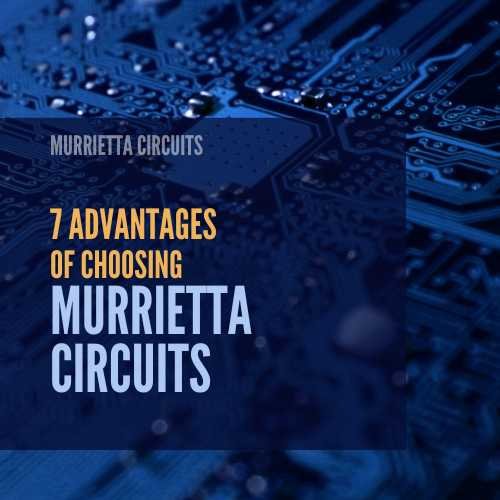Murrietta Circuits Adds the Excellon Cobra Hybrid Laser System
Murrietta Circuits is proud to announce that we recently added the Excellon Cobra Hybrid Laser System to our production floor. This new addition is designed to handle the increasing complexity of modern electronics, especially as our customers move towards smaller, more intricate High-Density Interconnect (HDI) Designs. Its dual-laser system, featuring both UV and CO2 lasers, has significantly improved the way we approach drilling microvias.
Understanding Microvias in PCB Design
Microvias are tiny, laser-drilled holes that connect one or more layers of a PCB. Unlike through-holes, which go through the entire board, microvias are only drilled through one or two layers. This makes them essential for high-density interconnect (HDI) designs, which are common in fields like telecommunications, aerospace, and medical devices.
Why Are Microvias Important?
Microvias are crucial for several reasons:
Miniaturization: They enable the creation of smaller, more compact electronic devices by connecting multiple layers without taking up much space.
Increased Functionality: More layers mean more complex and capable designs, which is a big win for advanced tech applications.
Space and Weight Savings: Especially important in aerospace and medical devices where every gram and millimeter counts.
Quality Matters
The quality of microvias directly impacts the electrical performance and longevity of the PCB.
Incomplete Connections: A poorly drilled microvia can lead to incomplete electrical connections.
Higher Resistance: This can cause higher resistance, leading to potential circuit failures.
Device Reliability: Poor quality can result in device malfunctions, reduced reliability, and increased maintenance costs.
Signal Integrity: As PCB designs get smaller and more complex, the precision of microvia drilling becomes even more critical. Ensuring each microvia is accurately drilled and properly aligned is key to maintaining the integrity and performance of the entire circuit.
Excellon Cobra Hybrid Laser System Key Features
What sets the Cobra apart is its Dual-Laser Capabilities. The UV Laser is first used to remove the copper from the top layer. Then, the CO₂ is used to remove the glass and resin without cutting through the copper pad below.
Dual-Laser Technology (UV and CO2): The system features both UV and CO2 lasers, offering flexibility to drill different materials and shapes.
High-Speed Beam Positioning System: The Excellon Cobra’s high-speed beam positioning system, combined with fine depth control, gives us consistent drilling depth across multiple layers, a critical requirement for maintaining the electrical performance of HDI boards.
Precision Microvia Drilling: The Cobra system is ideal for creating microvias that connect inner PCB layers without piercing through the entire board. For projects working on multi-layer designs, this precision is critical. Any deviation in depth can result in open circuits or short circuits, leading to costly rework or performance issues in the final product. The Cobra’s fine control over drilling depth helps us meet the tight tolerances required for impedance-controlled designs, which are essential for high-speed signal transmission.
Scanning Technologies: The system employs galvanometer scanning technology, which directs the laser beam via rapidly moving mirrors. The laser can achieve incredibly small spot sizes, down to a few microns, ensuring that even the smallest microvias are drilled with pinpoint accuracy. This level of precision is vital for sequential lamination processes, where HDI boards are built up layer by layer, and each microvia must precisely connect with internal traces.
Selective Material Removal: UV lasers can remove copper from the surface, while CO2 lasers can drill through the dielectric (glass and resin) without harming the underlying copper layers.
Simplified Operation: While the Cobra is packed with advanced features, it’s designed to be user-friendly, making it accessible even for less experienced operators. The system runs on a Windows-based interface, which integrates seamlessly into our existing production environment. This interface offers an intuitive layout, simplifying the process of setting up jobs, monitoring progress, and making adjustments on the fly. It also includes diagnostic tools that enable our team to quickly identify and resolve any issues that might arise during operation.
Unfocused UV Cleaning: The system includes an unfocused UV laser stage that helps clean up any carbon residue left by the CO2 laser.
Vision-Assisted Alignment System: One of the standout features of the Cobra is its vision-assisted alignment system. This system employs pattern recognition and multi-point alignment technology to ensure that the laser is always perfectly aligned with the features on the PCB. In multi-layer designs, where registration between layers is crucial, this technology dramatically reduces the potential for errors.
What This Means for Our Customers
The addition of the Excellon Cobra means we can offer even more precise and reliable PCB solutions. Whether it’s prototyping or small-to-medium production runs, this system allows us to take on more complex designs while maintaining the high-quality standards our customers have come to expect.



